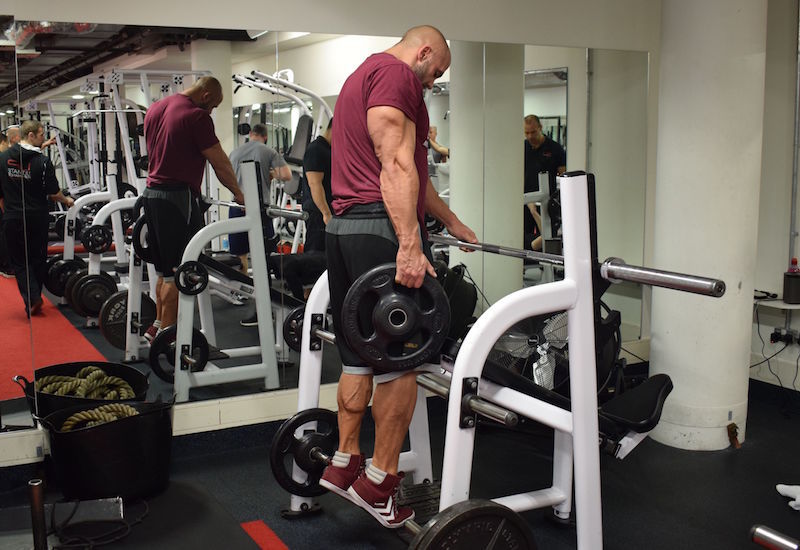Seven Common Muscle Building Myths You Need To Stop Believing
Want to gain muscle?
Some simple things can stop you from gaining the weight you desire.
You can start growing in the gym right away by following these seven simple steps.
Myth #1. Myth #1.
What would be the best way to build muscle? What’s better: stimulating a muscle 104 or 52 times per year? This is a no-brainer.
A large number of gym goers still train muscle groups only once a week. As an example, you could train your chest on Monday, your back on Tuesday and shoulders on Wednesday. You might also train your legs on Thursday, and then arms on Friday.
Start training your muscles twice a week if this is you.
You’ll have to manage your volume of training (the number of sets, repetitions, and exercises you do during a workout), so you can recover.
Start by splitting your weekly muscle training into two separate sessions, and perform them at least 2 days apart.
You shouldn’t overload your muscles by repeating the same workout twice in a week.

Myth #2. Myth #2: You Should train every day
Recovery is the most important factor for muscle growth.
You’ll understand the importance of recovering and increasing your capacity to work in order to handle higher training frequency if you read our “How often should you exercise” article.
You will also realize that training every single day is not a good thing.
You tear your muscles in the gym in hopes that they will repair themselves and grow stronger.
Your body will never be able to recover if you never leave the gym.
Three times per week is the absolute minimum that anyone can train to achieve results. It’s better to train at least four times a week.
Then, your recovery depends on how you feel, what you eat, sleep and stress level.
If you have the right factors in place, training five to six times a week for a short time can be effective. However, it is important to know how to manage your volume of training and when to stop.
You can grow even outside of the gym.

Myth No. 3: You Should Change up your workout every week Myth #3. You should change your workout every week
Trainees who are trying to gain muscle often suffer from a condition called ‘Training Deficit Disorder.
People are changing their workouts every time they go to the gym because of the availability of information online.
This myth is probably a result of the old bodybuilding magazines that told you to “shock” and “confuse” your muscles in order to grow.
If you want to build muscle, it’s best to repeat an exercise several times before switching.
You’ll spend the first 1 to 2 workouts of a training program refining the technique you use and finding the correct weights. You should then test yourself with a set of consistent exercises, and strive to improve each time.
This does not mean that you shouldn’t ever change your program.
You can only fit so much into one workout. So, you will need to change your approach to work your muscles in different ways and with different equipment.
The motivational value of program variation is also significant, since the monotony of the same workout can be overwhelming!
Follow your training program for at least 3 weeks before you change it.

Myth #4.
You’ve probably read about a bodybuilder’s or cover model’s training regimen and then tried it out the next day to look like them.
What many people fail to realize is that their style of training (think 30- 40 sets, an all-angle attack on one part of the body) is not the same thing that made them famous in the first instance.
Remember that these professional bodybuilders represent the genetic elite in muscle building. If you combine this with anabolic steroids, your approach will be completely different from what is effective for the average Joe.
Myth #5. Myth #5. You should avoid all isolation exercises
Compound lifts are the best way to maximize your muscle-building efforts.
Your training should be based on exercises like bench press, pull down, rows, deadlifts, and squats.
This does not mean, however, that isolation exercises are without merit.
Include isolation exercises in your training if you want to increase your strength, size, and endurance.

They work best in two ways:
- Filling the gaps. If you only do compound exercises in your workouts, then you are likely to neglect some important muscle groups, like calves, rear-delts (shoulders), and hamstrings.
- Increase your mind-muscle link. You may have a weak connection with a particular muscle if you find it difficult to “feel” it when you train it. It can be improved by isolating the muscle and allowing you to place more weight on it when doing the larger lifts.

Myth #6. Myth #6. You should always train to failure
You may have heard that the last one or two repetitions are what make muscles grow.
Then, surely we would be training to failure if this were the case?
Yes, but not always.
If you don’t train to failure in your first set, the number of repetitions that you can do on each set will decrease as your muscles tire.
You are less likely to reach your target reps on subsequent sets if you have not reached the target reps in the first set.
If you do this, you are taking sets that are close to failure. This increases the risk of injury and technique breakdown.
If you are able to complete more than 3 extra reps in set 1, then the weight may be too light.
We push our clients until they fail, but only on the last set for an exercise in a particular body part and only with safe exercises such as machines.
Myth #7. Strength Doesn’t matter
You need to be stronger if you want to grow.
It may look great on camera to pump up with lighter weights, but if you really want to grow, you need to push yourself to new limits.
This does not mean the maximum strength you can achieve in a single repetition (the most weight that you can lift). This means increasing the amount of weight you can lift between six and twelve reps.
Progressive overload is the most important rule for weight training.
You can do this in several ways, but adding weight to the bar will always be the most efficient.
Set yourself goals and work towards them while maintaining perfect technique.